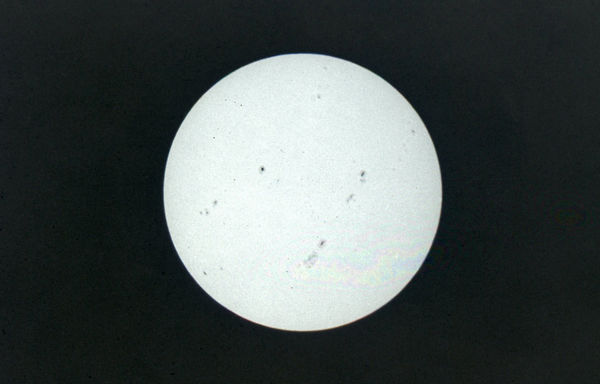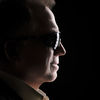Solar Eclipse Photography
Feb 27, 2017 13:11:31 #
There will be a solar eclipse August 21, 2017. The path of totality runs across the continental United States and passes close to a number of big cities. I am looking for any and all suggestions about photographing such an event, especially if you have experience in doing so. I know one has to be careful about burning out sensors when trying to photograph the sun, so neutral density filters, narrow aperture, and fast shutter speed would be part of the mix. Are there any special filters to be considered? It occurs to me that time lapse photography of the affected area, not just the eclipse itself, might be interesting as well. Further details of the eclipse can be found easily on the inter-webs!
Feb 27, 2017 13:23:59 #
Mathman wrote:
There will be a solar eclipse August 21, 2017. The... (show quote)
Get your filter here.
http://www.thousandoaksoptical.com/solar.html
ND is not good enough.
Welder's glass should be a #14 at least to avoid damage.
This is recommended by NASA and an Optomotrist I know who deals with people going blind from being stupid.
The only exception is if you ar a Union Pipe Fitter you do not need anything better than #10 or something like that.
But for the rest of us mere mortals the above are what is recommended by professionals who deal with actual solar events and the eyes.
Any other recommendations are just speculation and you are more than welcome to risk your eyes following them.
Feb 27, 2017 13:50:21 #
Thanks for your direct recommendations and link.
Architect1776 wrote:
Get your filter here. br http://www.thousandoaksop... (show quote)
Feb 27, 2017 13:56:48 #
Mathman wrote:
Thanks for your direct recommendations and link.
You are welcome.
Using a solar filter designed for solar viewing on Celestron 8" telescope.
Similar results on your lens with the same type of solar filter.

Feb 27, 2017 14:29:33 #
Another link that you might find useful is: http://www.nikonusa.com/en/learn-and-explore/article/h20zakgu/how-to-photograph-a-solar-eclipse.html
I reserved a campsite in Wyoming that is in the path of this eclipse, but I understand places to stay are getting hard to find.
I reserved a campsite in Wyoming that is in the path of this eclipse, but I understand places to stay are getting hard to find.
Feb 27, 2017 14:50:05 #
Thanks for the link. You are correct. Places to stay are getting snapped up fast and the available hotel/motel choices are already skyrocketing. Happy camping, hope you get some fabulous shots.
DMGill wrote:
Another link that you might find useful is: http://www.nikonusa.com/en/learn-and-explore/article/h20zakgu/how-to-photograph-a-solar-eclipse.html
I reserved a campsite in Wyoming that is in the path of this eclipse, but I understand places to stay are getting hard to find.
I reserved a campsite in Wyoming that is in the path of this eclipse, but I understand places to stay are getting hard to find.
Feb 27, 2017 15:23:34 #
I've used stacked ND filters to photograph sunspots. I have a mirrorless camera, so no problem with looking at the sun directly.
Feb 27, 2017 15:34:07 #
n3eg wrote:
I've used stacked ND filters to photograph sunspots. I have a mirrorless camera, so no problem with looking at the sun directly.
There can be sensor damage. But it is your choice to risk it.
Good luck along with the Union Pipe Fitter.
Feb 28, 2017 08:06:08 #
You need a solar filter. They tend to sell out quickly as the date gets closer. Last eclipse we had (partial) I had to make my own from a sheet of BADER solar film. Maybe a saving grace with the internet, but if they've all sold out locally you could probably buy from somewhere the eclipse isn't going to occur. Enjoy the event, it's quite spooky how all the animals now what's going to happen and fall silent!
Here's a link to where I bought mine.
http://www.tringastro.co.uk/baader-astrosolar-a4-nd50-safety-film-1817-p.asp
Here's a link to where I bought mine.
http://www.tringastro.co.uk/baader-astrosolar-a4-nd50-safety-film-1817-p.asp
Feb 28, 2017 08:59:04 #
Feb 28, 2017 10:29:41 #
As several others have mentioned, a proper solar filter is essential during the partial phases of the eclipse, but the real show is the approximately 2.5 minutes of totality, when the disk of the sun is completely covered by the moon and the solar corona becomes visible. During totality, no filter of any kind is needed or wanted, not for your camera and not for your eyes. This 2.5 minute window is the time when you will get your most impressive photos. In fact, compared to the photographs you take during totality, your photos of the partial phases (through a solar filter) will be uninteresting. So a clear, well-rehearsed plan for taking bracketed exposure in manual mode is essential in order to make the most of the brief period of totality. You want taking photographs to be almost automatic, so that you can stare at the most stunning natural phenomenon you will ever experience rather than miss it while looking through your viewfinder or fiddling with camera settings. There are several online sites that give good starting points for your exposure settings. Then bracket, bracket, bracket!
I've seen and photographed three total solar eclipses, and I'm looking forward with great anticipation to the 21 August eclipse.
I've seen and photographed three total solar eclipses, and I'm looking forward with great anticipation to the 21 August eclipse.
Mar 1, 2017 13:03:06 #
Thanks to everyone who responded. You have all given me much to consider and research.
If you want to reply, then register here. Registration is free and your account is created instantly, so you can post right away.





